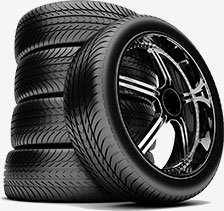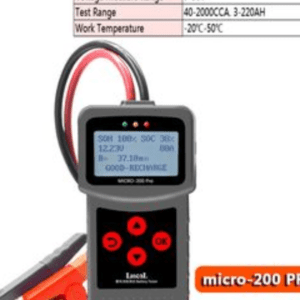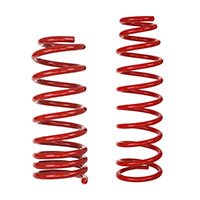Top Auto Parts for Your Vehicle’s Needs
Top Auto Parts for Your Vehicle’s Needs
Top Auto Parts for Your Vehicle’s Needs
Introduction
Your car, like any other machine, requires regular maintenance and occasional replacement of worn-out parts to function optimally. But with a myriad of auto parts available, it can be overwhelming to choose the right ones. This blog post will guide you through the top auto parts that are essential for your vehicle’s longevity and performance.
1. Engine Oil and Filter
Engine oil is the lifeblood of your car’s engine. It lubricates moving parts, reduces friction, and prevents overheating. A dirty oil filter can compromise the oil’s effectiveness.
Tips:
- Check your owner’s manual for the recommended oil type and change interval.
- Consider using high-quality synthetic oil for better performance and longer life.
- Change your oil filter every time you change your oil

https://kctimoauto.com/product-category/oil-lubricants/engine-oil-treatment/
Regularly changing your engine oil and filter can significantly extend the life of your engine, saving you thousands of dollars in repairs.
2. Brake Pads and Rotors
Your car’s braking system is crucial for your safety. Worn-out brake pads and rotors can lead to longer stopping distances and increased accident risk.
Tips:
- Listen for squealing or grinding noises when braking.
- Have your brakes inspected regularly by a qualified mechanic.
- Consider upgrading to ceramic brake pads for longer life and reduced brake dust.
- Replacing your brake pads and rotors before they wear out completely can prevent more serious and costly brake repairs.
3. Tires
Tires are the only contact point between your car and the road. Worn-out tires can affect your car’s handling, braking, and fuel efficiency.
Tips:
- Check your tire pressure regularly and maintain it at the recommended level.
- Rotate your tires every 6,000-8,000 miles to ensure even wear.
- Replace your tires when the tread depth reaches 2/32 of an inch.
Investing in high-quality tires can improve your car’s handling, fuel economy, and safety.
4.Spark Plugs
Spark plugs ignite the air-fuel mixture in your vehicle engine’s cylinders. Worn-out auto spark plugs can cause misfires, poor fuel economy, and decreased engine performance.
Tips:
- Replace your spark plugs according to your owner’s manual’s recommended schedule.
- Consider upgrading to high-performance spark plugs for improved performance and fuel efficiency.
 https://kctimoauto.com/product/denso-iridium-spark-plugs/
https://kctimoauto.com/product/denso-iridium-spark-plugs/
Replacing your spark plugs can improve your car’s acceleration, fuel economy, and overall performance.
5. Air Filter
A dirty air filter can restrict airflow to your engine, reducing its power and fuel efficiency.
Tips:
- Replace your air filter every 12,000-15,000 miles or more often if you drive in dusty conditions.
- Consider using a high-performance air filter for improved airflow and engine performance.
A clean air filter can help your engine breathe easier, improving its performance and fuel economy.
6. Battery
Your car’s battery provides the electrical power needed to start the engine and operate various electrical components. A weak or dead battery can leave you stranded.
Tips:
- Have your battery tested regularly by a qualified mechanic.
- Keep your battery terminals clean and corrosion-free.
- Store your battery in a cool, dry place when not in use.
Investing in a high-quality battery can ensure reliable starting and prevent unexpected breakdowns.
7. Serpentine Belt
The serpentine belt drives multiple accessories like the alternator, power steering pump, and air conditioner compressor. A worn-out belt can cause these accessories to fail.
Tips:
- Inspect your serpentine belt regularly for signs of wear, such as cracks, fraying, or glazing.
- Replace your serpentine belt according to your owner’s manual’s recommended schedule.
A broken serpentine belt can leave you stranded and cause significant damage to your engine.
8. Timing Belt
The timing belt synchronizes the rotation of the crankshaft and camshaft, ensuring proper valve timing. A broken timing belt can cause catastrophic engine damage.
Tips:
- Replace your timing belt according to your owner’s manual’s recommended schedule.
- Have your timing belt inspected by a qualified mechanic at each oil change.
A broken timing belt can cause bent valves, damaged pistons, and other costly engine repairs.
 https://kctimoauto.com/product/engine-and-alternator-belt-toyota-camry-v6/
https://kctimoauto.com/product/engine-and-alternator-belt-toyota-camry-v6/
9. Coolant and Radiator
Your car’s cooling system keeps the engine at the optimal operating temperature. A low coolant level or a faulty radiator can lead to overheating.
Tips:
Check your coolant level regularly and top it off with the recommended coolant/antifreeze mixture. Flush and refill your cooling system every periodically.
Overheating can cause serious engine damage, so it’s important to maintain your cooling system.
10. Wiper Blades
Clear visibility is crucial for safe driving. Worn-out wiper blades can impair your vision, especially in rainy or snowy conditions.
Tips:
- Replace your wiper blades every 6-12 months or more often if you live in an area with harsh weather conditions.
- Use high-quality wiper blades for better performance and durability.
Investing in good wiper blades can improve your visibility and safety in inclement weather.
11. Headlights and Taillights
Functional headlights and taillights are essential for safe driving, especially at night.
Tips:
- Replace burned-out bulbs promptly.
- Keep your headlights and taillights clean to maximize their brightness.
Clear and bright headlights and taillights can improve your visibility and help you avoid accidents.
12. Shock Absorbers and Struts
Shock absorbers and struts help absorb road shocks and vibrations, improving your car’s ride quality and handling. Worn-out shock absorbers can also affect your car’s braking and steering.
Tips:
- Have your shock absorbers and struts inspected regularly by a qualified mechanic.
- Replace worn-out shock absorbers and struts as soon as possible.
Replacing worn-out shock absorbers can improve your car’s ride quality, handling, and safety.
13. Fuel Filter
A clogged fuel filter can restrict fuel flow to your engine, reducing its power and fuel efficiency.
Tips:
- Replace your fuel filter according to your owner’s manual’s recommended schedule.
A clean fuel filter can help your engine run more efficiently and prevent fuel system problems.
14. Oxygen Sensors
Oxygen sensors monitor the amount of oxygen in your exhaust gases and help the engine’s computer adjust the air-fuel mixture. Faulty oxygen sensors can lead to poor fuel economy and emissions problems.
Tips:
- Have your oxygen sensors inspected and replaced as needed.
Replacing faulty oxygen sensors can improve your car’s fuel economy and emissions performance.
15. Catalytic Converter
A catalytic converter reduces harmful emissions from your car’s exhaust. A damaged or clogged catalytic converter can cause poor engine performance and emissions problems.
Tips:
- Avoid driving aggressively, as this can damage your catalytic converter.
- Have your catalytic converter inspected and replaced as needed.
A functioning catalytic converter helps protect the environment and ensures your car complies with emissions standards
 .https://kctimoauto.com/what-are-the-5-morning-routine-that-keep-car-last-long/
.https://kctimoauto.com/what-are-the-5-morning-routine-that-keep-car-last-long/
Conclusion
By regularly inspecting and replacing these top auto parts, you can ensure your vehicle’s optimal performance, longevity, and safety. Remember to source genuine auto parts to guarantee the best possible quality and performance.
Additional Tips:
- Support Local Small Businesses: Consider purchasing auto parts from https://kctimoauto.com/ auto parts stores/ repair shops. This helps support local businesses and ensures you get personalized service and expertise.
- DIY or Professional Mechanic: Decide whether to tackle DIY auto repairs or hire a professional mechanic. If you’re unsure, consult a mechanic for advice.
- Online Resources: Utilize online resources such as forums, YouTube tutorials, and websites to learn more about auto partsand maintenance.
Do you have any other questions about auto parts or car maintenance? ,feel free to let us know























 https://kctimoauto.com/product/engine-and-alternator-belt-toyota-camry-v6/
https://kctimoauto.com/product/engine-and-alternator-belt-toyota-camry-v6/